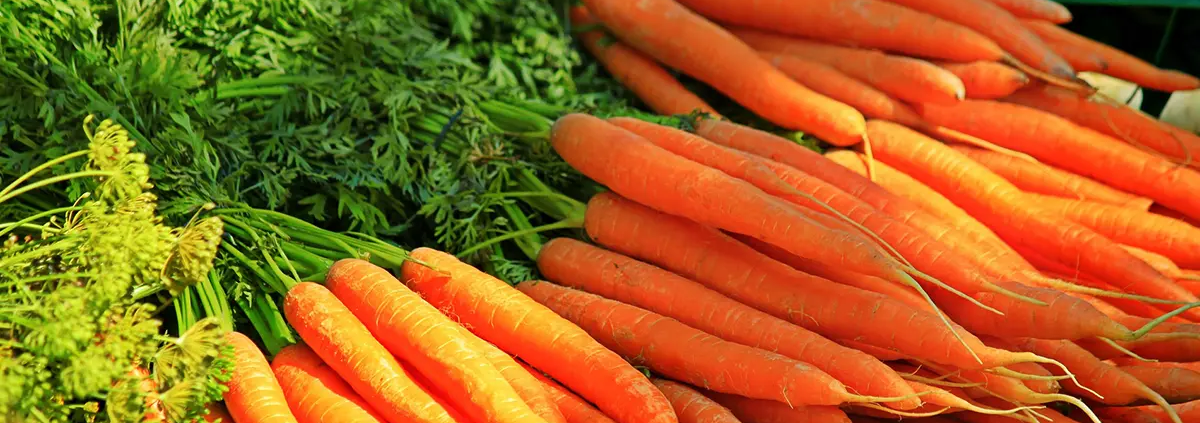Carrot Farming in India: Techniques for Successful Growth
Carrot farming is very common in India because of the country’s different climatic conditions and increase in demand. It is a very nutritious root vegetable, which is high in vitamins and minerals, making it a preferred choice for consumers. Due to health reasons and to meet the demand for fresh vegetables, there has been a sudden increase in farming. The given information will explore the effective methods and use of implements such as Disc Plough and rotavators to maximize production for long-term success.
Varieties of Carrots Grown in India
There are multiple varieties of carrots grown in India, each suitable to different climatic conditions and tastes. A free of the famous varieties are:
- Desi Carrot (Indian variety): Famous for its dark orange colour, this type is heavily grown in northern India and is used for both fresh consumption and processing. It is smaller in size and less sweet.
- Nantes Carrot: This one is commonly grown in the cooler regions of India. It is cylindrical in shape and has a sweet taste. Moreover, Nantes carrots are mostly grown for export as they are of superior quality and have longer life spans.
- Chantenay Carrot: Chantenay carrots are grown in regions with sandy-loam soil. They are small and have a sweet flavour. You will find this variety in local markets, and they are mostly in industrial units.
- Hybrid Varieties: These carrots are a mixture of different varieties and are known for their high production and immunity to diseases. A few of the hybrid varieties have extra advantages such as better colour, flavour and storage life.
Steps for Farming Carrots in India
There are multiple steps in carrot farming. Go through the given information to get a brief knowledge of each step:
Climate and Soil Requirements for Carrot Farming
Carrots are successful in growing in cold temperatures and need fertile sandy-loam soil for maximum growth. The ideal states for farming are Punjab, Uttar Pradesh, Haryana, Himachal Pradesh, and Madhya Pradesh. They have the perfect combination of temperature and soil required for harvesting.
The most suitable temperature is between 15°C – 25°C, and a cold climate will also help in root development. Even though carrots can thrive in multiple types of soil, they grow best in deep, loose and fertile soil. Additionally, for healthy growth, choose the soil with high compost.
Preparation of Land and Sowing
The land preparation requires some important steps to follow. Firstly, the land has to be ploughed to a depth of 20-25 cm to loosen the soil and improve air circulation. Ensure the land is free from any big stones or clumps that may affect the root development. Rotavators are best suited for this process. Landforce offers the most affordable rotavators and provides various models. Furthermore, In India, Landforce Rotavator price starts at Rs. 77,000 and goes up to Rs 1.6 lakh.
Irrigation and Fertilization
Carrots require continuous watering for healthy growth. However, the soil should never be waterlogged, as over-watering may affect the root. To make sure water usage is minimal, drip irrigation or sprinkler systems are commonly used in large-scale carrot farming. In regions with irregular rainfall, farmers rely heavily on irrigation to maintain the necessary moisture levels in the soil.
Fertilization is very essential in the farming of carrots. Before planting, farmers apply decomposed organic compost or manure into the soil to supply nutrients. Nitrogen, phosphorus, and potassium (NPK) fertilizers are used in a balanced ratio during the growing season for healthy root growth and yield. Over-fertilizing with nitrogen should be prevented, as it promotes too much leafy growth and affects root development.
Weed and Pest Management
Weeds can pose a great threat to your farming as they require light, water, and nutrients. To keep the crop healthy, constant weeding is a must, but there are some farmers who prefer to control it through manual labour or mulching.
Carrots are also susceptible to pests such as root maggots, aphids, and carrot flies, which damage the root and decrease yields. Organic practices like rotation and neem-based pesticides may be used to control pests. On the other hand, chemical pesticides are to be applied moderately.
Harvesting
Carrots are usually ready to harvest around 3 to 4 months after planting, depending on the variety and conditions. The roots have to be smooth and firm. Furthermore, they are picked by hand manually, pulling the roots out of the ground without any harm.
After harvesting, the carrots are thoroughly washed to rid them of soil and dirt. They are next sorted by quality and size. Export or market-sale carrots tend to be graded into various groups, with the best-quality carrots being sold in markets or exported. Meanwhile, the lower qualities are used for processing juices, soups, and snacks.
Post-Harvest Management
Post-harvest storage is necessary to avoid spoilage. Carrots have to be stored in a dry, cool place. You can use a tractor-trailer to efficiently transport your freshly harvested vegetable to the storage unit. Proper refrigeration ensures the longer shelf life of the vegetable. Controlled atmosphere storage (CAS) is also becoming very popular in India, as it maintains the freshness of the carrots for extended periods.
Conclusion
In conclusion, carrot farming holds great potential in India because of the country’s multiple climatic conditions and increase in the demand for healthy vegetables. Farmers can easily maximize their production with the help of modern techniques, such as better irrigation, pest management, and efficient handling of post-harvest. Farming equipment like the Landforce rotavator, trailer, and seed drills help with optimal growth. Carrot cultivation can be a very profitable and sustainable farming practice as its demand is expanding for both domestic markets and international exports.




Leave a Reply
Want to join the discussion?Feel free to contribute!